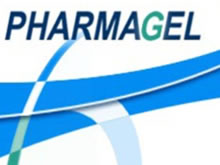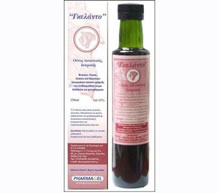
Λεξικό .. Allergy to general anaesthetic agents
Allergy to general anaesthetic agents
Life-threatening anaphylaxis to neuromuscular blocking drugs (NMBDs) and thiopentone given during general anaesthesia are now well recognized. Interest in the reactions continues to be high because of the desire both for better diagnosis and to elucidate underlying mechanisms. A major advance for in vitro diagnosis was the detection of IgE to thiopentone and the NMBDs suxamethonium, alcuronium, d-tubocurarine, gallamine and vecuronium. Employing patient's sera together with NMBDs and thiopentone coupled to Sepharose indicate that the drug immunoassays (IAs) are valuable diagnostic procedures for the analysis of suspected cases. In one study of 29 subjects who reacted to a NMBD, skin tests and IAs were positive in 79% and 83% of subjects respectively. Inclusion of border-line cases with the IAs increased the figure to 90%. Baldo (1991) believes that employment of skin tests and the IAs he developed for the detection of NMBD and thiopentone - reactive IgE antibodies offers the best and safest combination of investigative safeguards currently available[1].
The prevalence of patients with positive prick-tests to PD occurred in 15.6% in this prospective cohort. Neuromuscular blocking drugs were found to have the highest prevalence of positive prick-tests. There is positive agreement when the substance responsible for the allergic reaction is suspected, otherwise agreement is low[2]. Muscle relaxants and other drugs used in general anaesthesia may induce even anaphylaxis. Succinylcholine and most other muscle relaxants used in general anaesthesia have bifunctional quaternary ammonium determinants which render them complete antigens. Intradermal testing is valid at appropriate concentrations as following: d-Tubocurarine [Maximal Concentration (M.C.) 300μg/ml], Pancuronium: M.C.: 200μg/ml, Suxamethonium (Succinylcholine): M.C.: 200μg/ml, Thiopental sodium: M.C.: 2,5μg/ml. These concentrations do not elicit a response in non allergic subjects.
References
1. Baldo, B.A.: Determination of IgE antibodies in the diagnosis of hypersensitivity to anaesthetic agents. Allergy clinical Immunology News Suppl. No. 1, 1991, p. 265.
2. Tamayo E, RodrÃguez-Ceron G, Gómez-Herreras JI, Fernández A, Castrodeza J, Alvarez FJ. Prick-test evaluation to anaesthetics in patients attending a general allergy clinic. Eur J Anaesthesiol. 2006 Dec;23(12):1031-6.
Γκέλης Ν.Δ. - Λεξικό Αλλεργίας - Εκδόσεις ΒΕΛΛΕΡOΦΟΝΤΗΣ - Κόρινθος 2013
Gelis Ν.D. - Dictionary of Allergies - VELLEROFONTIS Publications - Corinth 2013




